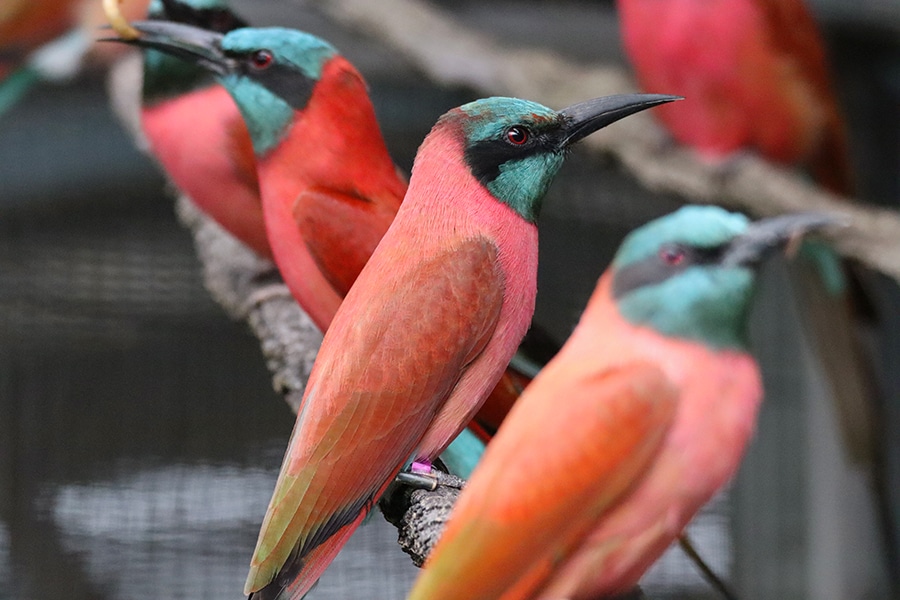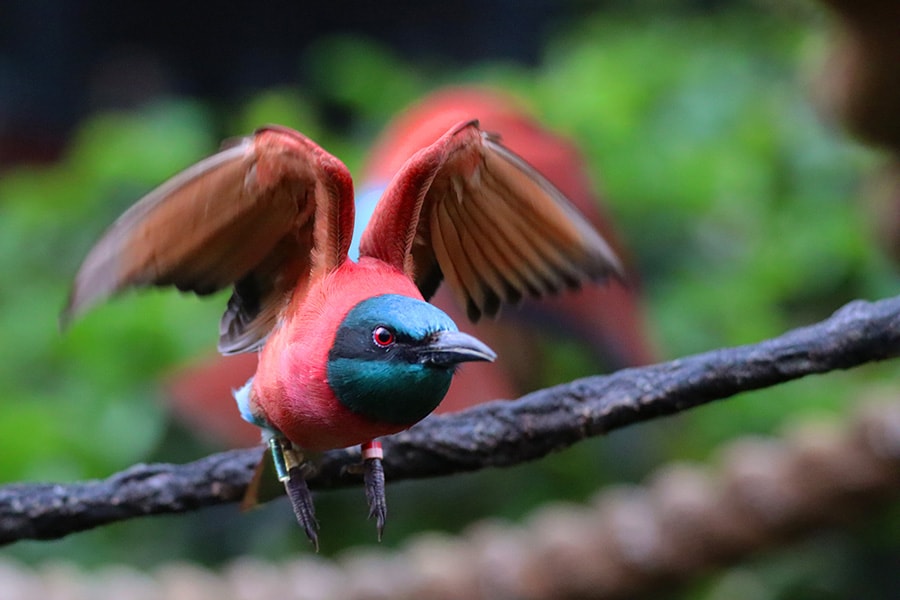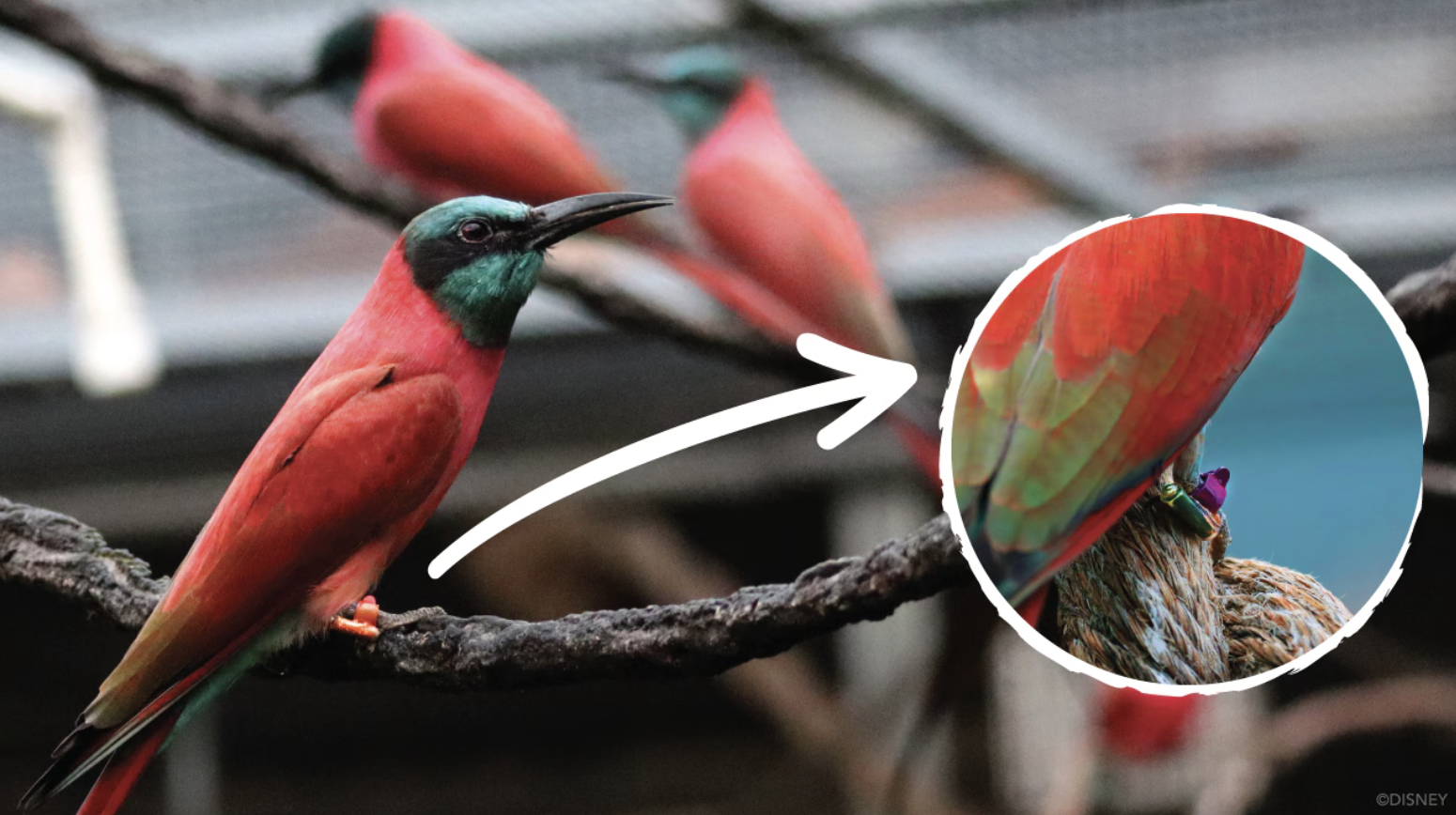Have you ever wondered how we monitor the breeding and feeding behavior of over 100 birds? Would you believe the technological solution comes in the size of a grain of rice?
At Disney’s Animal Kingdom, scientists have used RFID technology to study more about the breeding behaviors of Northern carmine bee-eaters. Now, they are using this tracking device to learn even more about the behavior of these unique and colorful birds.

Some big and some small, some slow and some fast, bird diets can be tricky. Using these RFID bands helps teams monitor how many times the carmine bee-eaters enter their “dining rooms” for a tasty spread of their favorite insects and to keep them healthy.
Why is this important? Because their necessary diets are more balanced and rich in the nutrients they need. If they eat a diet primarily of wild bugs, rather than the bugs our dietitians give them, then their diet may become unbalanced.
The technology has given our animal care team yet another tool to understand bird activity, location, behavior and responses to training cues. We hope to eventually include other bird species in this research and continue to learn more about all our unique animals.

Birds at Animal Kingdom
At Disney’s Animal Kingdom, our job is to care for our animals, in every aspect of their health, including diets. This technological tool ensures we can collect as much information about our animals and their health as possible, especially since we have the largest population of this bird species in any Association of Zoos and Aquariums (AZA) accredited institution!
“This project has been really exciting to work on, because we get to implement cutting-edge technology to take the best possible care of our birds,” said Andrew, a Research Programs Specialist on the Animals, Science and Environment team.

To learn more about this species and many others like it, visit DisneyAnimals.com!
This is just one example of how we’re putting possibility into practice and caring for wildlife and their habitats, something we call Disney Planet Possible.

